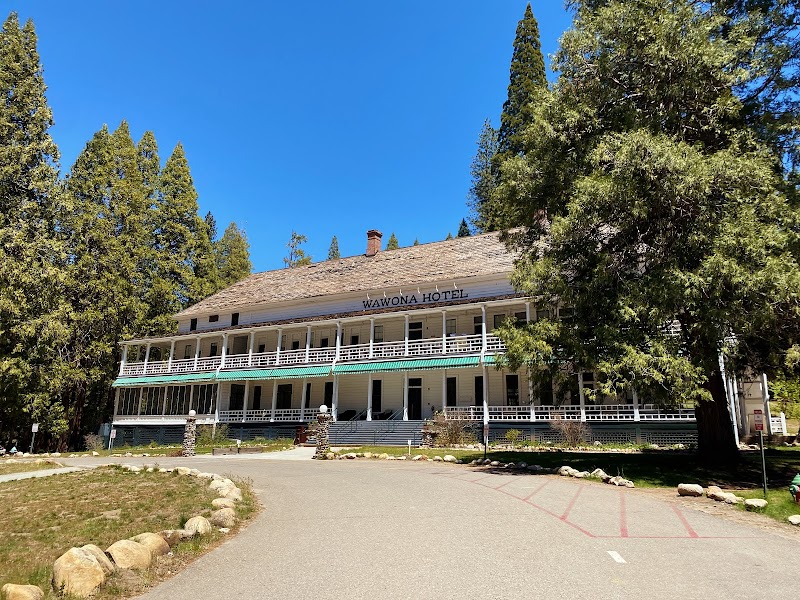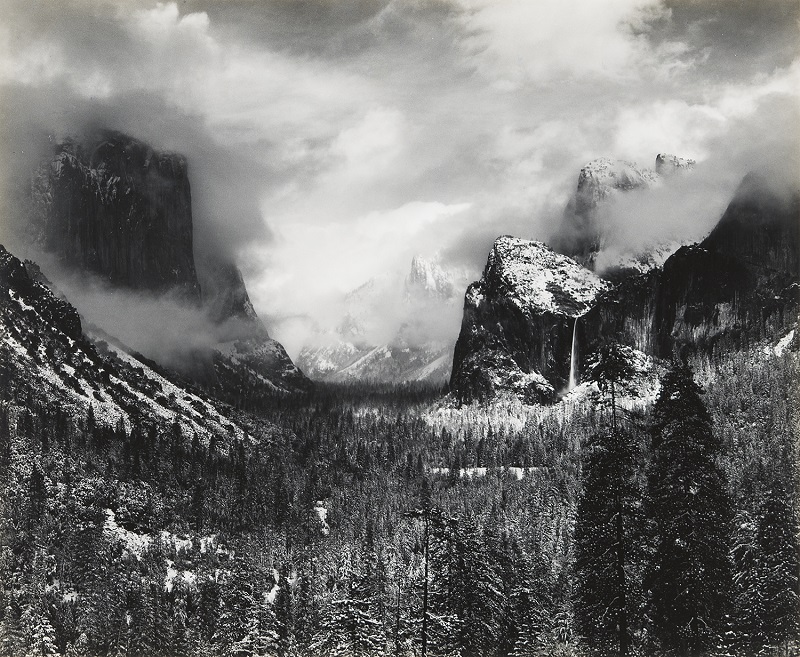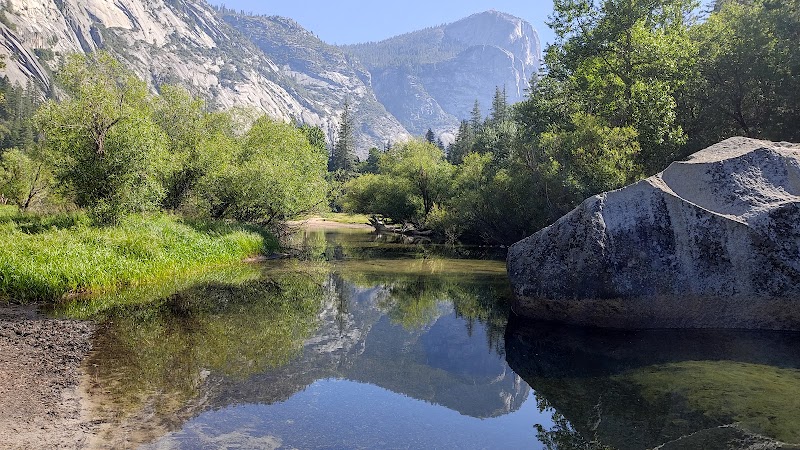Did you know that Yosemite National Park spans an amazing 747,956 acres and is a magnet for over 4 million nature enthusiasts annually? This majestic wilderness is recognized for its awe-inspiring waterfalls, towering granite cliffs, and vibrant wildflower meadows. Prepare to have your senses overwhelmed by the sheer natural beauty of this iconic American landscape.
As you look forward to the marvels that are waiting to be discovered, consider the benefits of using a tourist map. With a detailed map, you can strategically plan your journey through Yosemite's vast terrain, ensuring you experience the very best the park has to offer. A map is more than a simple guide—it's your personal key to a memorable adventure, unlocking the secrets of the unforgettable wilderness.
" Booking.comUnveiling the Hidden Gems of Yosemite National Park
When you first visit Yosemite National Park, the diverse array of experiences that await is astounding. From the lesser-known natural wonders to the unique cultural and historical aspects that define Yosemite, there is a lot more to discover beyond the typical tourist path.
1. The Underappreciated Wonders of Mariposa Grove
In the towering sequoias of Mariposa Grove, you'll discover a world that feels ancient, serene, and awe-inspiring. Home to over 500 mature giant sequoias, some of which are over 3,000 years old, Mariposa Grove is a testament to nature's grandeur and resilience. Interestingly enough, this grove was one of the first areas that Abraham Lincoln set aside for protection, a move that later led to the creation of National Parks.
2. The Hidden Charms of Hetch Hetchy Valley
Frequently overlooked due to the popularity of Yosemite Valley, Hetch Hetchy is a secluded treasure offering similar grandeur and beauty. The valley is home to remarkable granite formations, serene meadows, and the imposing Hetch Hetchy Reservoir. Unlike in Yosemite Valley, here you can enjoy tranquil hikes away from the crowds, and savour the sense of tranquility that permeates the area.
3. The Authentic Yosemite Experience in Tuolumne Meadows
When you explore Tuolumne Meadows, you are entering a realm that encapsulates the essence of Yosemite. As the largest alpine meadow in the Sierra Nevada, Tuolumne is a paradise for those seeking solitude, serenity, and unspoiled natural beauty. The meadow's delicate ecosystem, rich biodiversity, and striking geology make it a must-visit location.
4. Delve into the Past at the Yosemite Museum
For a change of pace, delve into the rich cultural tapestry of Yosemite at the Yosemite Museum. This museum is an integral part of Yosemite’s history and was the first building constructed as a museum in the national park system. You can learn about the indigenous tribes of the region, their history, and their connection with the land. For a more immersive experience, don't miss the adjacent reconstructed Indian Village of Ahwahnee.
5. Experience the Thrill of Rock Climbing at El Capitan
For those seeking adventure, Yosemite delivers in abundance. As a globally recognized destination for rock climbing, El Capitan presents a formidable and thrilling challenge for climbers. Standing at over 3,000 feet tall, this granite monolith is not for the faint-hearted. But even if climbing is not your preferred activity, witnessing climbers ascend this awe-inspiring cliff is an experience in itself.
As you plan your visit, it's worth checking out a tourist map of United States to understand Yosemite's location in relation to other attractions. This will help you maximize your trip, whether you're exploring the vast landscapes of Yosemite or venturing beyond into the broader American wilderness.
FAQs
How can I make the most of my visit to Yosemite?
Embrace the spirit of adventure, take your time to explore, and don't limit yourself to the most popular spots. Each corner of Yosemite offers something unique, from the hidden valleys and secluded groves to the thrilling cliffs and peaceful meadows.
What makes Yosemite unique?
It's the blend of stunning natural beauty, rich cultural history, and diverse recreational opportunities that truly sets Yosemite apart. Whether you're a nature lover, a history buff, or an adventure seeker, Yosemite has something for everyone.

Practical Information for Yosemite National Park
Transportation and Mobility
Getting around Yosemite National Park can be an adventure in itself. The park offers a free shuttle service that runs throughout Yosemite Valley, taking you to all major points of interest and trailheads. It's a convenient and sustainable way to explore, reducing your carbon footprint while ensuring you don't miss a beat. For those keen on soaking in the scenery at their own pace, renting a bicycle is a fantastic option, especially in the warmer months.
Schedules and Prices
It's important to note that Yosemite National Park is open 24 hours a day, 365 days a year, but some areas are inaccessible due to snow in winter. The entrance fee is $35 per vehicle or $30 per motorcycle, valid for seven consecutive days. If you're planning multiple visits within a year, consider purchasing the $70 Yosemite Pass. The park also participates in the Federal Recreational Lands Pass series, which can offer additional savings.
Safety Tips
While the park is a paradise for outdoor lovers, its wilderness requires respect. Always maintain a safe distance from wildlife and never attempt to feed them. Remember, you're in their home. Stay hydrated, especially on longer hikes, and don't forget to carry a map. Cell service is limited or non-existent in many areas of the park, so relying on digital maps can leave you stranded.
Practical Recommendations
With the changing seasons, Yosemite presents a different face throughout the year. Spring and early summer are ideal for waterfall viewing, while late summer brings opportunities for stargazing. Remember that Yosemite is a popular destination, so booking accommodations well in advance, particularly in summer, is highly recommended. Lastly, always pack layers as temperatures can drop significantly in the evenings, even in summer.
FAQs
Is there public transportation to Yosemite National Park?
Yes, public transportation to Yosemite is available. Amtrak and Greyhound services are available to nearby towns, from which you can take the YARTS (Yosemite Area Regional Transportation System) buses directly into the park.
Are there dining options within the park?
Yes, Yosemite National Park offers a variety of dining options. You'll find everything from fine dining at the Ahwahnee Dining Room to casual eateries and grocery stores in Yosemite Village. However, remember to make dining reservations in advance during peak season.
What should I do in case of a medical emergency?
For minor health issues, there are medical clinics in Yosemite Valley and Wawona. In case of a serious emergency, dial 911. Make sure to inform the operator you're in Yosemite National Park and provide as much detail about your location as possible.

Frequently Asked Questions about Yosemite National Park
Despite providing exhaustive details about Yosemite National Park, you may still have specific questions. Let's address those unique queries that may not have been dealt with in the previous sections.
1. Are there any special rules for wildlife encounters in Yosemite?
Yosemite is home to diverse wildlife, and respecting their space is vital to your safety and their survival. Maintain a distance of at least 50 yards from large animals like bears and mountain lions. For smaller animals like birds and squirrels, a distance of 25 yards is recommended. Never feed the wildlife; it alters their natural behaviors and can lead to human-animal conflicts.
2. Can I bring my pet to Yosemite National Park?
While pets are permitted in Yosemite, their access is limited to certain areas. These include most campgrounds, picnic areas, and roads. They are not allowed on trails, in meadows, or in public buildings. Pets must be on a leash at all times and should never be left unattended, especially in vehicles.
3. Do I need any special gear for hiking in Yosemite?
Yosemite's trails range from easy to strenuous, and the gear you need depends on the trail you choose and the weather conditions. For any trail, sturdy hiking shoes, a hat, sunglasses, sunscreen, and plenty of water are essential. For longer, tougher hikes, consider packing hiking poles, a map, compass, and a first aid kit. In winter, you may need additional gear such as crampons and an ice axe.
4. Are there any unique photography spots in Yosemite?
Yosemite is a paradise for photographers. Tunnel View offers a stunning panorama of Yosemite Valley, including El Capitan, Half Dome, and Bridalveil Fall. Glacier Point provides a breathtaking view of Half Dome and the high country. For those willing to hike, the view of Yosemite Valley from Taft Point is unparalleled.
5. Is there accommodation inside the park?
Yes, Yosemite National Park offers a variety of accommodations, from luxurious rooms at The Ahwahnee to canvas tent cabins at Curry Village, and traditional hotel rooms at Yosemite Valley Lodge. There are also 13 campgrounds within the park, some of which require reservations.
6. What are some lesser-known experiences in Yosemite?
While Yosemite's famous landmarks are a must-visit, there are plenty of off-the-beaten-path experiences too. Try stargazing at Glacier Point, exploring the ancient giant sequoias in the less-visited Merced Grove, or seeking out the hidden waterfalls like Lehamite and Snow Creek Falls.

